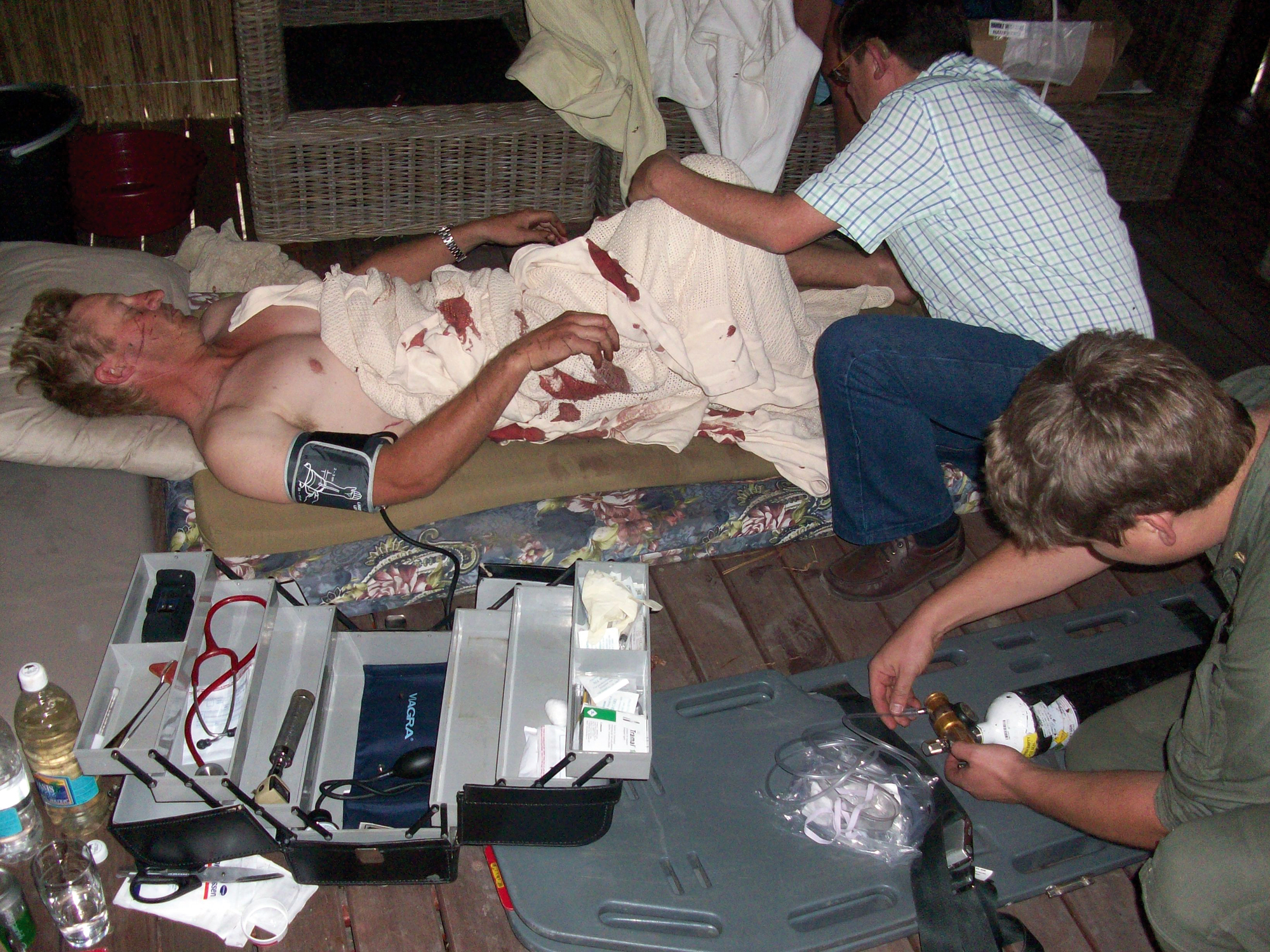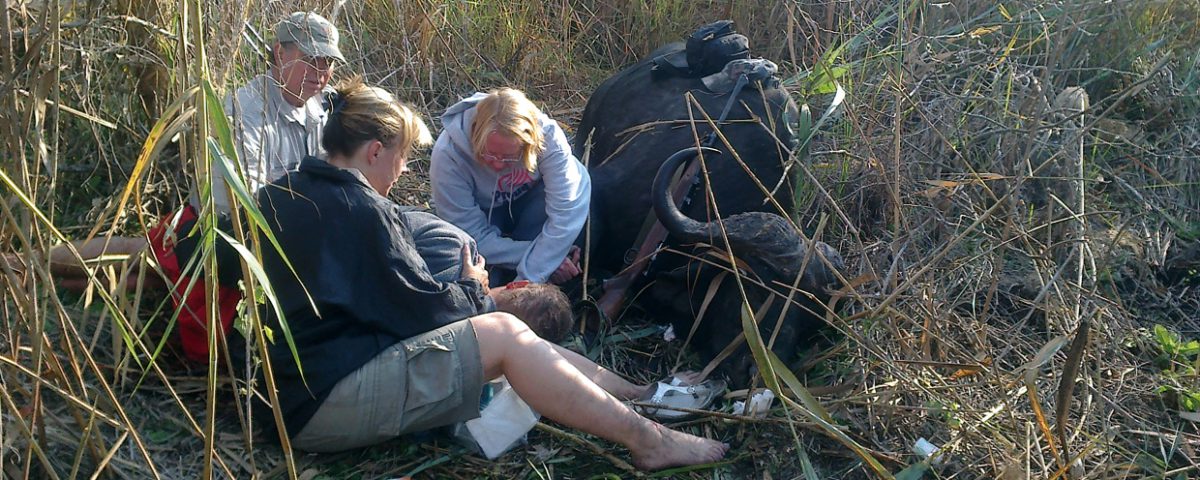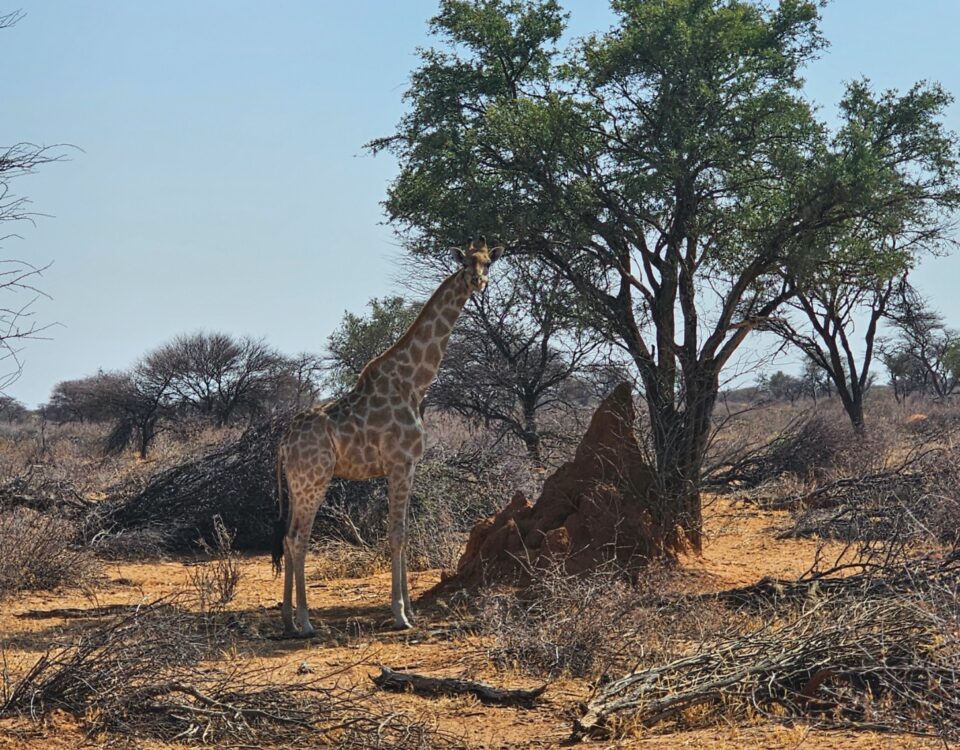
The risk of living with wildlife
July 29, 2016
Attacked by a black rhino
August 1, 2016PH Felix Marnewecke was gravely wounded by a charging buffalo in the Bamunu Conservancy, a remote area bordering the Linyanti River in Eastern Caprivi. His friend, PH Fritz Nolte, who was conducting the search for the wounded buffalo with him on 8 August 2012, reports.
O n the third day of following the wounded buffalo, we essentially lost the track. Close to a small elevation covered with denser, green vegetation and high trees, our client requested a short break to catch his breath. It was still early, but already quite warm.
Felix proceeded on his own, to check for any clue on the whereabouts of the buffalo and establish how close it was. We had not yet opened our canteens for a sip of water when a sudden burst of crackling reeds and the furious scream of a buffalo filled the air. In vain we waited for the report of Felix’s rifle; but it didn’t come – he was calling for help! I raced through the tall reeds towards where the noise was coming from, approximately 80 metres away. As I approached, I saw Felix being thrown into the air, and heard the frightening roar of the buffalo, which indicated the pain had made it go completely berserk. When I arrived on the scene, Felix was lying on his back with the buffalo on top of him, trampling him furiously, clearly wanting to give him the fatal blow.
In retrospect I find it remarkable how the flow of time in an extreme situation such as this seems to decelerate to slow motion. I’m sure it took me only a fraction of a second to mount my rifle, while simultaneously considering the different options. Killing the raging buffalo on the spot had to be ruled out, because the 900-kilogram corpse crashing down on my friend would surely finish what the wounded buffalo had started. I took a more sideways position and placed my first bullet in the spine, close to the pelvis. The buffalo instantly dropped on its hindquarters, releasing Felix from underneath. Now I had the opportunity to place a second bullet in the heart.
By now Fred, one of our trackers, had also reached us, armed with the client’s rifle. He placed two more shots into the vitals of the black monster. Its death bellow told us it no longer posed a risk. Our attention immediately went to Felix, who was unable to rise to his feet. The lower half of his body was drenched in blood, and his clothes had been torn to shreds. On the positive side, he was conscious and responsive. A quick inspection showed that he had been gored three times: once in the back, once in the groin and once in the upper leg. Fortunately, no artery had been gored. I tried to temporarily control the bleeding, my biggest concern now being the wound on his back, since Felix said he had noticed a dull feeling in his legs. Professional help was now top priority. As quickly as I could, I located his cellphone. It was covered in blood, but miraculously was still operational. Then I called my wife Petra back at camp and, after giving her a hasty brief on the situation, asked her to organise a pickup by helicopter, in view of Felix’s possible spinal injury. Transporting him on the extremely rough road to camp was not advisable.

Known as one of the big five, Black Death or widow-maker in Africa, the African buffalo is widely regarded as a very dangerous animal. Buffaloes are notorious among big game hunters as very dangerous animals, with wounded animals reported to ambush and attack pursuers.
Camp attendants brought a stretcher and we managed to carry Felix to camp over a distance of approximately one mile. Fortunately, you will never catch Petra not having done her homework: she had all the necessary emergency numbers and contacts at hand, and by the time we reached camp, help was already on the way.
The Botswana Defence Force had a helicopter unit based near by, and offered its assistance immediately. This was definitely the easiest and fastest rescue. The local commander tried his best to help, but unfortunately, it simply took too long to organise landing rights on Namibian territory through diplomatic channels.
Instead, the nearest Namibian helicopter was rustled up from the Tsumeb airfield, almost 800 km away. It first had to fly the long distance to Rundu to refuel, then proceed to Katima Mulilo to refuel again, and then pick up a paramedic. From there it is only a short leg of some 60 km to the camp on the banks of the Linyanti River. A landing spot was cleared close to camp, and supplied with GPS coordinates. These were spot on, and the chopper landed directly on the clearing.
In the meantime Felix had gone into shock. We tried to make him more comfortable with hot-water bottles, placing them around him and doing our best to stop him from passing out. When the helicopter arrived, the paramedic immediately attached him to a drip. As soon as he was stable, we carried him to the waiting chopper and he was flown to Katima Mulilo, where an ambulance jet that had been assigned from Windhoek was waiting for him. From here on it was merely routine for the crew of the SOS jet. Felix, finally, was hospitalised in Windhoek. The episode had taken place at eight in the morning, and the chopper had left camp around four in the afternoon.
The lesson of this near call is clear: circumstances, such as a fragile infrastructure, long distances and limited technical resources, add to the inherent dangers of a hunt on dangerous game. Even when matters go smoothly, the time lapse between an incident and rescue is considerable but inevitable.
To enable him to guide the next elephant hunt only three weeks later, Felix was assisted by his guardian angels in the following three ways: the wounds inflicted by the buffalo were certainly severe, but not deadly; his friend and co-PH Fritz Nolte was at hand within seconds to ward off the deadly charge; and the emergency and medical services in Namibia proved their effectiveness under the challenging circumstances engendered by the remote location where the accident had occurred.
This article was first published in the HUNTiNAMIBIA 2013 issue.


